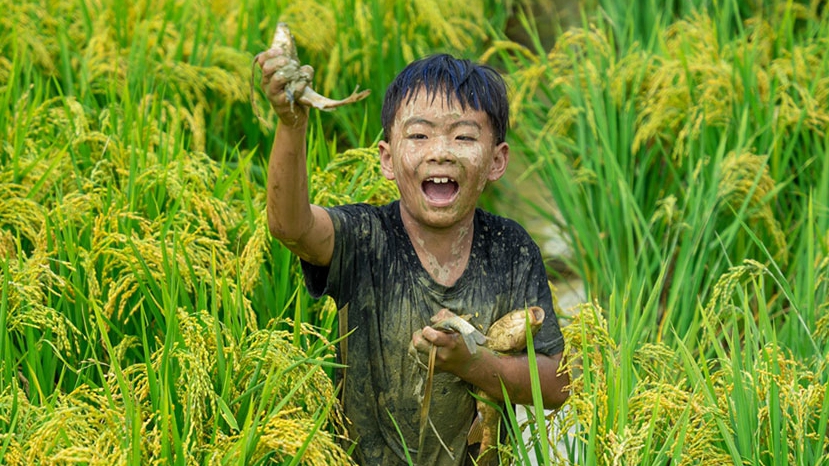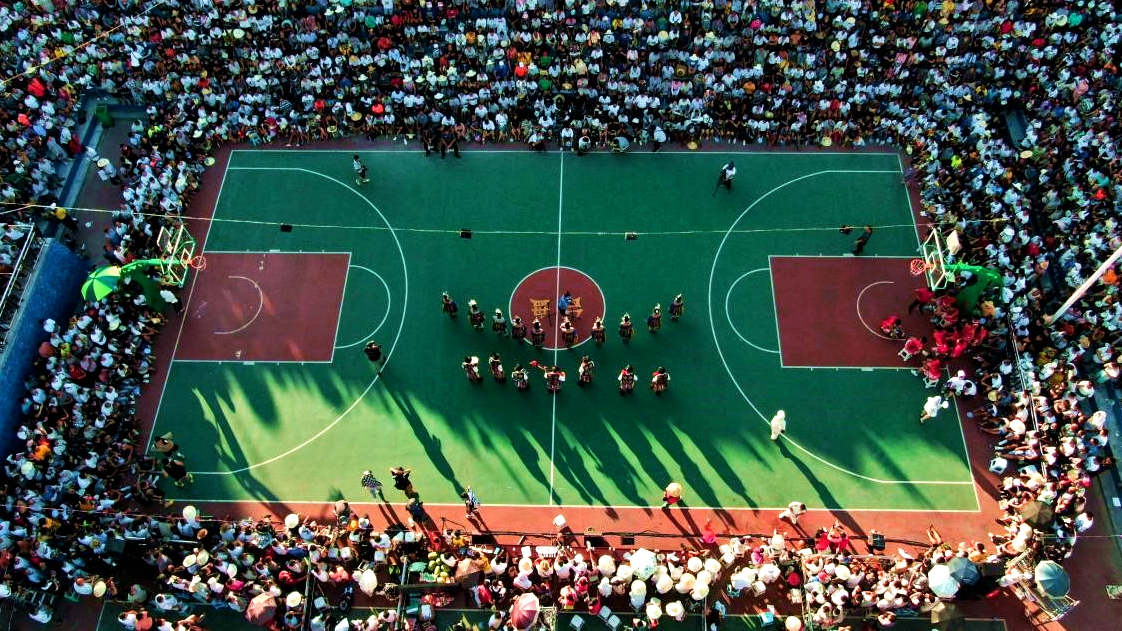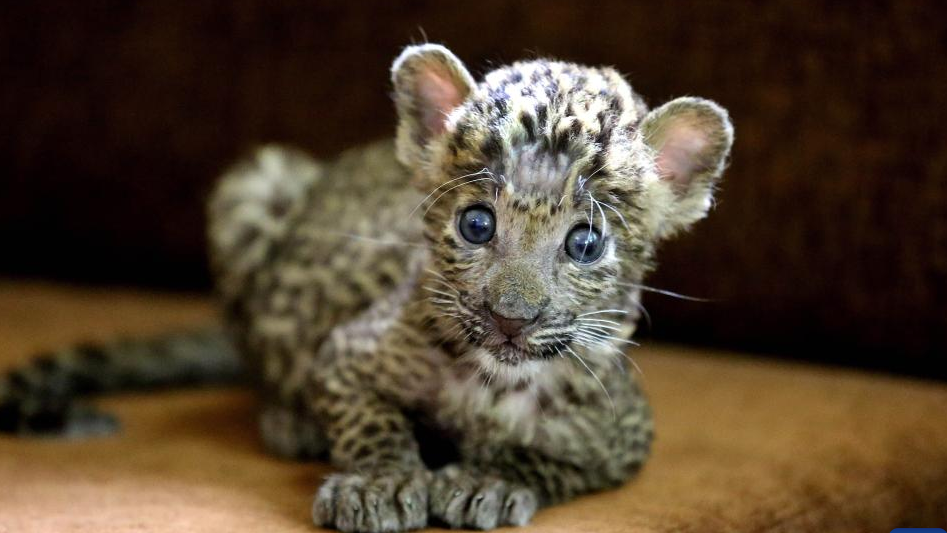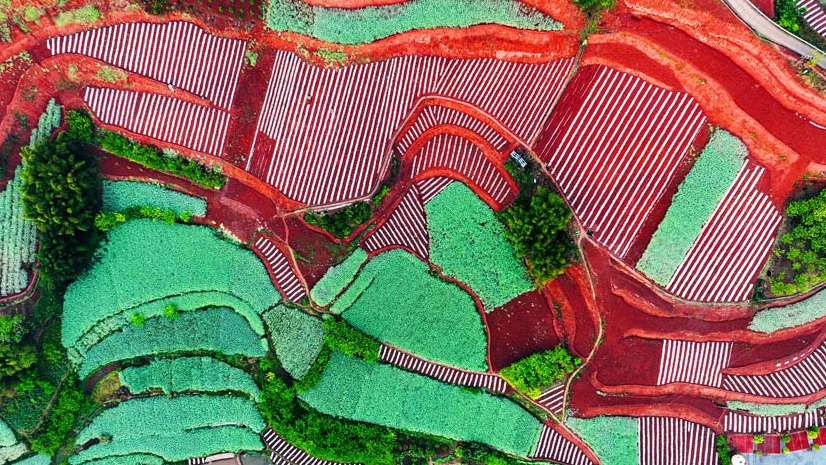Feature: Father-son duo's pursuit of promoting Tibetan intangible heritage
LHASA, Sept. 13 (Xinhua) -- In a studio on the top floor of a three-story Tibetan-style house in Lhasa, capital of southwest China's Tibet Autonomous Region, Phuntsok Tobgye and his apprentices are busy working on a thangka painting measuring more than 10 meters in length and nearly three meters in width.
The painting, featuring mainly warm green tones, depicts Tibet's breathtaking scenic beauty and many famous attractions like Potala Palace. "Do not grind the thangka pigments too hard, otherwise its color will lighten," Phuntsok Tobgye instructed his apprentices while holding a coloring bowl.
Phuntsok Tobgye, 49, hails from Tsedong Village in the city of Xigaze and is one of the inheritors of Tsedong Thangka. It is a branch of the Miantang painting, the most influential school of Tibetan thangka painting since the 15th century, which was included in the national intangible cultural heritage list in 2006.
With the unremitting efforts of thangka painters like Phuntsok Tobgye, the intangible heritage skills have been passed to younger generations, with their works reaching a wider range of art lovers.
Tsedong Village has a tradition of painting thangka. When he was a child, Phuntsok Tobgye developed an interest in thangka paintings hung in the homes of the villagers. He then started sketching the landscape of his hometown and portraying the stories told by his parents. After graduating from primary school, he began to learn thangka painting.
In the beginning, his master asked him to draw on a white powder-covered blackboard on his lap. His drawing hand was not allowed to touch the board to avoid messing up the white powder.
"Sometimes, I practiced with the same pose for more than 10 hours a day," he recalled, adding that rigorous training helped him acquire the essential basic skills.
When Phuntsok Tobgye was 18 years old, he came to Lhasa, learning from other thangka masters to help repair the murals in the Potala Palace. It was where he learned different thangka styles.
"I had always longed to see all kinds of murals in the Potala Palace. The restoration project made my dream come true," Phuntsok Tobgye said.
He continued to learn the artform in the following years in Lhasa. During this period, his works were displayed at various thangka exhibitions, including one in Beijing and one in Vancouver, Canada. His solo thangka exhibition held in Lhasa in June 2015 attracted nearly 1,000 visitors on its opening day and his works gained extensive popularity among art collectors.
Penpa, vice chairman of the regional artists association, called Phuntsok Tobgye's works "flavorful," adding that they exude a strong sense of ancient charm.
"His thangkas have an unadorned tone compared with other works from the Miantang school of painting. The proportions of portraits and landscapes in his paintings are also peculiar," Penpa said.
Early last year, Phuntsok Tobgye established a thangka art company with his younger brother. The company has sold thangka paintings to Beijing, Anhui and other places in China.
Sonam Wangden, Phuntsok Tobgye's son, is learning thangka painting from his father together with other apprentices. The 24-year-old said that he can only recall his father being constantly busy with the canvas.
"I respect my father. He is gentle and tenacious and regards thangka painting as his lifelong pursuit," Sonam Wangden said.
Not long ago, Sonam Wangden and his father went to the outskirts of Lhasa to undertake restoration work of temple murals. After winding up their work, they sat by the wall and savored Tibetan yogurt while chatting about their restoration work.
"Thangka brings me closer to my father and makes me understand his persistence better. I will also make thangka painting my lifelong pursuit and pass on the intangible heritage," Sonam Wangden said.
Now, not only Phuntsok Tobgye's son but many of his relatives paint thangkas. Phuntsok Tobgye is proud of them. "I am getting older, but more confident that many people will continue to pass on such traditional skills."
Photos
Related Stories
- China mulls new law to protect Qinghai-Tibet Plateau
- Rainbow appears in Nyingchi, China's Tibet
- Feature: Volunteer teacher helps students in Tibet pursue art dream
- Pairing assistance promotes common prosperity in Tibet
- Feature: Education goes beyond classroom for voluntary teacher in Tibet
- Conference held on enhancing pairing-up support for Tibet
- Rallying national support for Tibet testifies to China's institutional strengths
- Pairing assistance boosts Tibet's development
- Tibet foundation helps over 30,000 regain clear vision
- First 5 asymptomatic carriers discharged from hospital in Lhasa
Copyright © 2022 People's Daily Online. All Rights Reserved.









